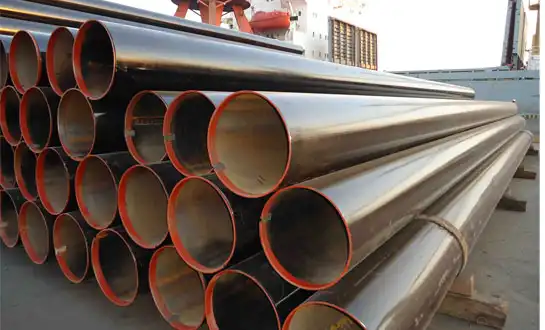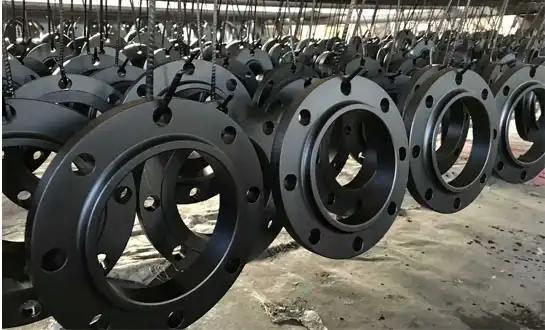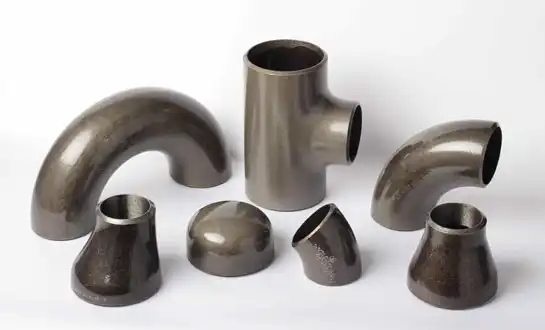Large-Diameter Pipe Bends: Applications and Manufacturing Process
Large-diameter pipe bends are important parts of modern industrial plumbing systems because they let you change the direction of flow while keeping the structure strong and efficient. In power plants, water treatment facilities, chemical processing plants, and oil and gas transportation, these special fittings are a must. To make these parts, you need to use complex methods and quality control measures that make sure the dimensions are correct and the parts work as expected. For projects that have specific angle needs, limited space, or non-standard sizes that off-the-shelf products can't handle, custom pipe bends are the perfect answer. Engineers can make decisions that improve system performance while also making sure it is safe to use and doesn't cost too much if they know about both real applications and manufacturing methods.
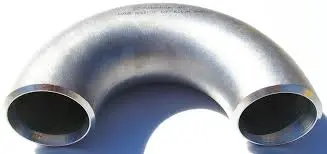
Understanding Large-Diameter Pipe Bend Specifications
Material Selection and Grade Requirements
Material selection forms the foundation of successful large-diameter pipe bend projects based on operational parameters. Carbon steel grades like ASTM A234 WPB remain predominant for general industrial applications due to excellent mechanical strength, weldability, and cost-effectiveness. Stainless steel grades including 304, 316, or duplex variants provide superior corrosion resistance for harsh environments. Alloy steel materials deliver enhanced high-temperature performance for power generation and petrochemical applications. Custom pipe bends often require special material certifications including mill test reports, impact testing, and positive material identification verifying chemical composition. Engineers must consider thermal expansion coefficients influencing spacing calculations and support design in systems experiencing significant temperature variations.
Dimensional Standards and Bend Radius Classifications
Large-diameter pipe bends follow international dimensional standards governing tolerances and specifications. The bend radius to pipe diameter ratio (R/D) fundamentally affects manufacturing feasibility and hydraulic performance. Long radius bends with 1.5 R/D ratios offer reduced pressure drop and smoother flow transitions. Short radius bends with 1.0 R/D ratios provide space-saving solutions in congested layouts. Custom pipe bends frequently involve non-standard radii calculated for three-dimensional piping arrangements in complex facilities. Wall thickness calculations must address internal pressure containment and external loading, with thinning occurring on the extrados during bending while thickening happens on the intrados.
Angle Configurations and Segmented Assemblies
Large-diameter pipe bends are manufactured in various angle configurations from standard 45-degree and 90-degree bends to custom angles. Single-piece bends offer superior structural integrity eliminating potential leak paths, though manufacturing limitations may restrict maximum diameter and angle combinations. Segmented bend assemblies provide solutions for extremely large diameters or compound angles. Custom pipe bends often incorporate precise angle measurements determined through three-dimensional coordinate geometry to align with existing equipment connections or navigate around obstructions in expansion projects.
Manufacturing Processes for Large-Diameter Pipe Bends
Hot Induction Bending Technology
Hot induction bending represents the most advanced method for producing large-diameter pipe bends with superior metallurgical properties and dimensional accuracy. This process employs localized heating through electromagnetic induction coils raising a narrow circumferential band to forming temperature. Progressive heating minimizes cross-sectional distortion and wall thickness variation compared to other techniques. Hot induction bending accommodates diameters from small bore to pipes exceeding 60 inches with appropriate wall thicknesses for high-pressure service. Custom pipe bends benefit particularly from this technology because operators can program specific radius requirements, compound angles, and three-dimensional curves impossible through other methods.
Cold Bending and Mechanical Forming
Cold bending processes form large-diameter pipe bends at ambient temperature through mechanical force using specialized equipment including rotary draw benders and press benders. Rotary draw bending wraps pipe around a fixed radius former while maintaining cross-sectional geometry through internal mandrels. Cold forming induces work hardening that increases yield strength in the bent section. Custom pipe bends in smaller diameters often utilize cold forming methods offering flexibility for short production runs without extensive tooling expenditure.
Quality Control and Testing Protocols
Comprehensive quality control ensures large-diameter pipe bends meet dimensional tolerances, material specifications, and performance requirements. Dimensional inspection verifies starting material before bending operations commence. Post-forming inspection employs coordinate measuring equipment and laser scanning to verify final geometry. Non-destructive examination techniques including ultrasonic testing detect potential manufacturing defects. Custom pipe bends often require additional testing including impact testing and metallographic examination. Documentation packages provide complete traceability supporting quality assurance requirements.
Industrial Applications of Large-Diameter Pipe Bends
Oil and Gas Pipeline Systems
Large-diameter pipe bends serve indispensable functions in oil and gas transmission infrastructure where pipelines traverse varied terrain. Long-distance transmission lines require bends accommodating alignment changes while minimizing pressure drop and maintaining pig passage capabilities. Subsea pipeline systems utilize precisely engineered bends conforming to seabed contours. Custom pipe bends in these applications often incorporate corrosion resistant alloy overlays, thermal insulation requirements, or specialized coatings providing barrier protection against external corrosion.
Power Generation and District Heating Networks
Power generation facilities utilize large-diameter pipe bends extensively in steam distribution systems, cooling water circuits, and flue gas handling infrastructure. High-energy piping systems require bends manufactured from alloy steels maintaining strength at elevated temperatures. District heating networks employ large-diameter bends in underground distribution mains navigating beneath streets and around building foundations. Pre-insulated pipe bends maintain thermal efficiency while protecting against groundwater infiltration. Custom pipe bends accommodate unique fluid characteristics and temperature profiles inherent to alternative energy sources.
Water Treatment and Municipal Infrastructure
Municipal water treatment facilities depend on large-diameter pipe bends to route flow through treatment processes efficiently. Raw water intake structures utilize bends minimizing turbulence and sediment entrainment. Chemical treatment systems incorporate corrosion-resistant bends handling aggressive fluids. Distribution mains utilize custom pipe bends accommodating existing utilities and maintaining minimum cover depths. Wastewater collection systems specify bends with smooth internal surfaces resisting solid deposition and facilitating cleaning operations.
Conclusion
Large-diameter pipe bends stand as fundamental components enabling efficient fluid transport across diverse industrial applications. Manufacturing complexity involving hot induction bending and cold forming delivers products meeting stringent specifications. Custom pipe bends supplier provide tailored solutions addressing unique project constraints while maintaining performance standards essential for critical infrastructure projects.
HEBEI RAYOUNG PIPELINE: Your Trusted Custom Pipe Bends Manufacturers
For your next job, HEBEI RAYOUNG PIPELINE TECHNOLOGY CO., LTD. is ready to help with a wide range of high-quality pipe fitting options. Buttweld carbon steel elbows, tees, reducers, and flanges are just a few of the industrial pipe fittings we offer. These make sure that connections are safe. With our wide range of products, we can meet all of your design needs, from simple straight lines to complicated angles that need custom pipe bends made just for you. Our carbon steel pipes are trusted by customers in the UK and around the world thanks to our GOST-R and SGS certifications and ISO 9001:2015 quality approval. Contact our specialists today at info@hb-steel.com to discuss how our steel pipe fittings deliver the performance, safety capabilities, and long-term durability your critical infrastructure demands.
References
1. American Society of Mechanical Engineers. (2023). ASME B16.9: Factory-Made Wrought Buttwelding Fittings. New York: ASME Press.
2. Bouwman, L. P. & Holst, J. M. (2022). Pipe Bending Technology: Manufacturing Methods and Quality Assurance in Large-Diameter Applications. Journal of Pipeline Engineering, 21(3), 187-204.
3. Mohitpour, M., Golshan, H. & Murray, A. (2024). Pipeline Design and Construction: A Practical Approach, Fourth Edition. New York: ASME Press.
4. Nayyar, M. L. (Ed.). (2023). Piping Handbook, Ninth Edition. New York: McGraw-Hill Education.
5. Peng, L. C. & Peng, T. L. (2021). Pipe Stress Engineering: Principles and Applications. New York: ASME Press.
6. Steel Tube Institute. (2023). Guidelines for Induction Bending of Steel Pipe. Cleveland: Steel Tube Institute Publications.

Need a quote? Want to see samples? Just say hello. We’re friendly. We’re fast. And we’re ready when you are.
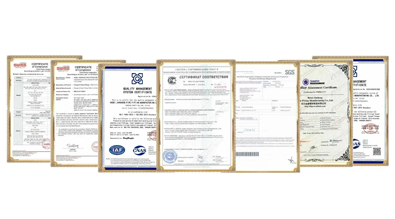
Welcome to RAYOUNG – Strong Pipes, Stronger Promise
